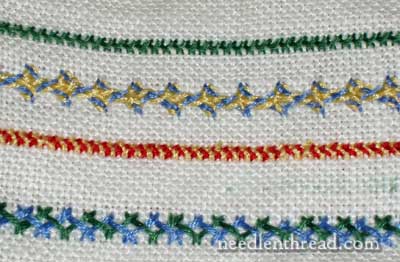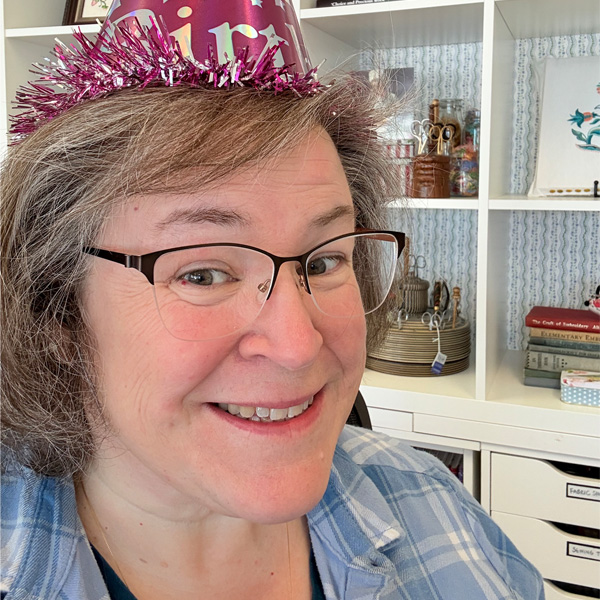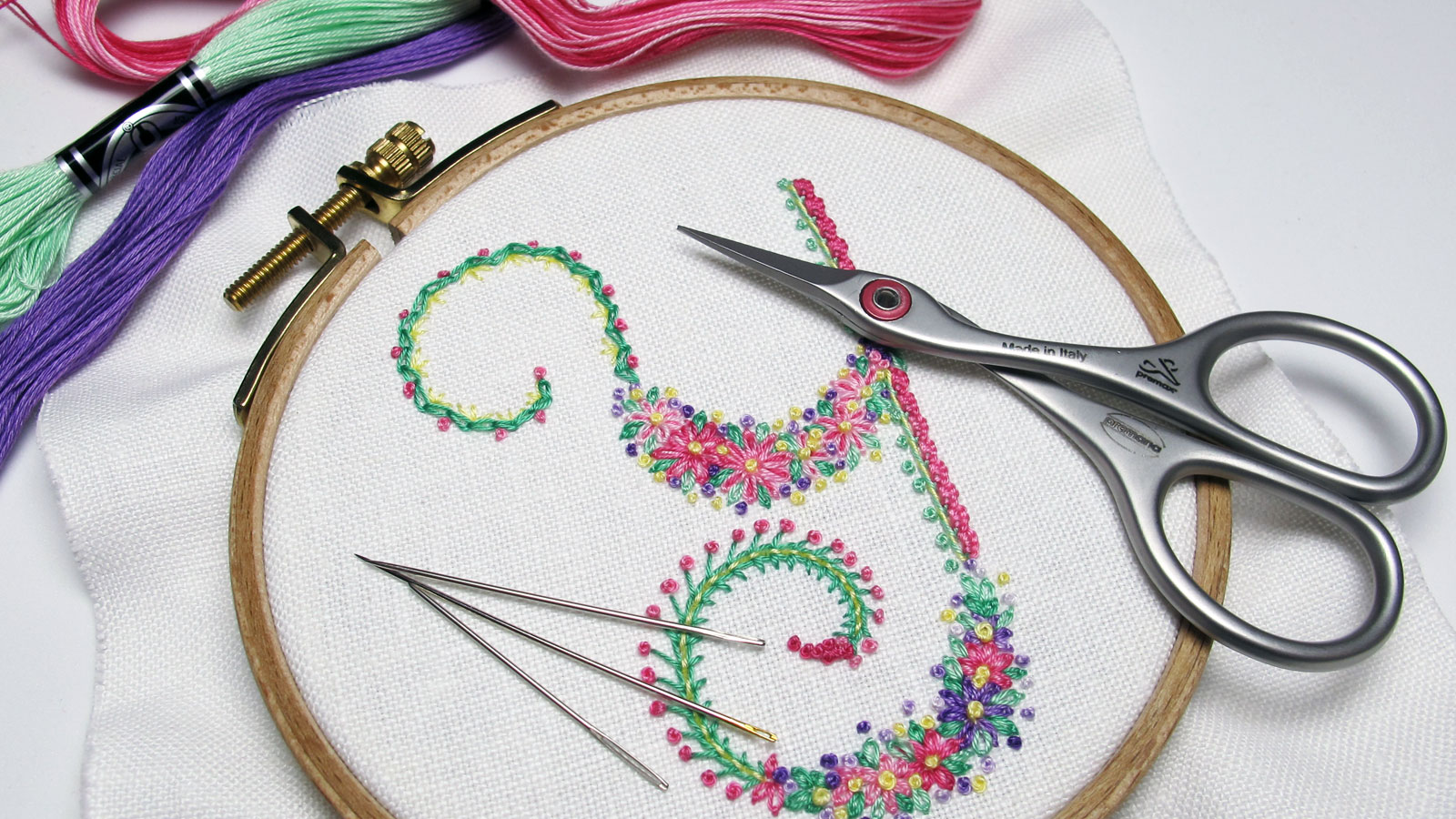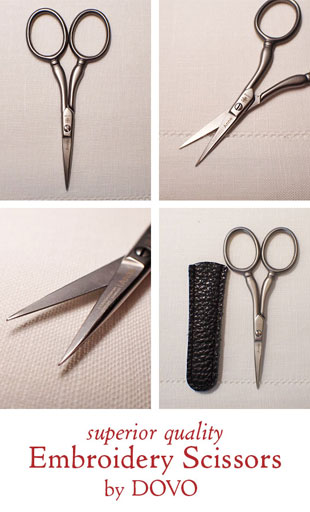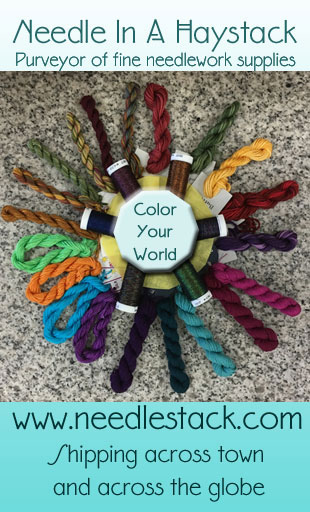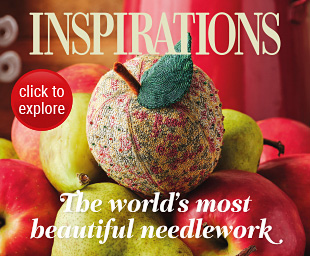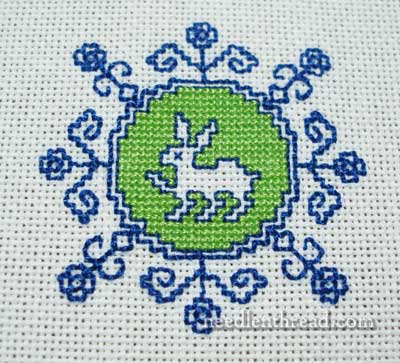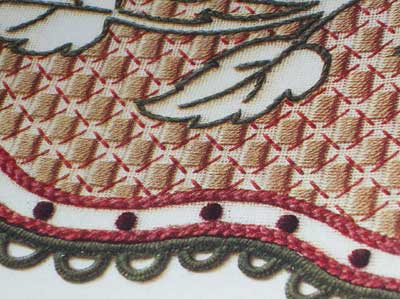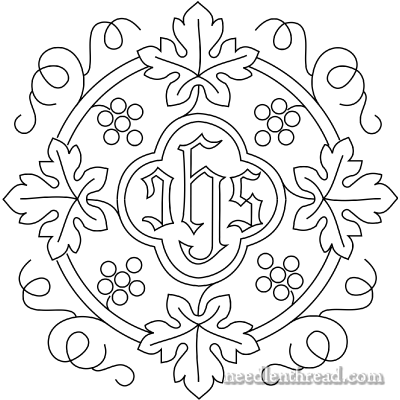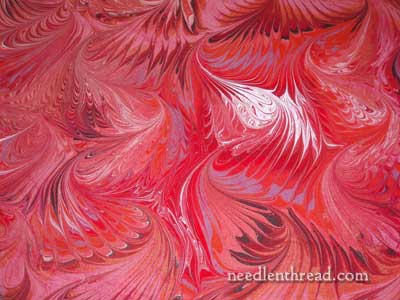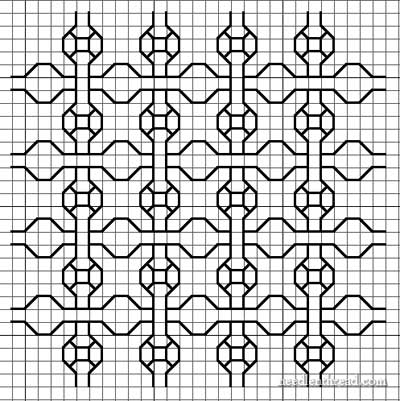October 22, 2010
Developing a Spot Sampler: Herringbone
After we added a bit of blackwork to our spot samplers, the next step for the Needle Arts class was to look at some other stitches – aside from cross stitch, backstitch, running stitch, and Holbein stitch – that could be used in counted techniques.
There are LOTS of stitches that can be used in counted thread embroidery, but what I wanted to accomplish with my students was to get them comfortable with working more complex stitches, following stitch diagrams, and working out variations. For this exercise, we focused on the herringbone stitch, which can be worked effectively on either even-weave or plain-weave fabric.
